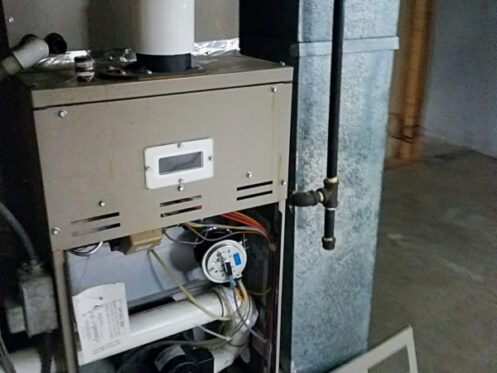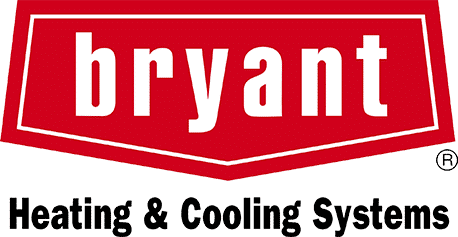Leaking is probably one of the last things that you expect the furnace in your home to do. After all, these appliances are designed to produce dry heat. When the nearby flooring is damp or when water starts to pool, it’s important to both identify and resolve the underlying problem. The following are seven common reasons why leaks develop in and around these units.
1. Your Furnace’s Second Heat Exchanger Isn’t Working
Standard furnaces have just one heat exchanger. High-efficiency furnaces or furnaces with efficiency ratings of 90% or greater have two. In a high efficiency furnace’s second heat exchanger, flue and exhaust gases undergo additional changes as extra heat is extracted. When everything is working properly, water damage won’t be an issue. However, build-ups of calcium carbonate in this chamber, and other byproducts of the secondary heat exchange process can cause water to start pooling on the floor. This is an issue that’s most likely to develop in an ill-maintained furnace. It’s also one that should always be handled by a professional.
2. The Furnace Filter Is Dirty
Among the most common causes of furnace leaks are dirty air filters. Anything that impedes airflow in your heating system can result in excess condensation. This includes damaged or leaky air ducts, obstructed air ducts, blocked or closed air vents and dirty filters. The first step in troubleshooting a leaky furnace is checking the air filter. If this component is covered in a thick build-up of dirt, hair, and lint-like materials, put a new one in. You should also wipe down all air registers, vents, and grilles, or clean these off with your vacuum cleaner’s hose attachment. When the furnace filter is the culprit, water usually pools right near or just underneath it.
3. The HVAC Drain Line Is Clogged
High-efficiency furnaces or condensing furnaces can develop leaks at their condensate pumps and drain pans. Due to their second heat exchangers, these furnaces constantly produce condensation. In fact, this is how they got their name. If the exit route for this moisture is blocked, water will eventually spill out onto the floor. We can inspect your furnace’s condensate pump and drain pan for blockages and structural damage. More importantly, not only will we resolve the problem, but we’ll also offer tips to prevent it from happening again.
4. Your Air Conditioner Is the Culprit
Water leaks are most common among high-efficiency furnaces. However, this doesn’t mean that it’s impossible to find water pooling at the base of a standard efficiency furnace. With standard efficiency furnaces, the first thing to check is the nearby AC unit. If your air conditioner is installed right next to or above your furnace, it may be having problems with its own condensate line and drain pan.
5. Your Integrated HVAC Accessories Are Failing
Whether to improve indoor air quality (IAQ) or regulate indoor humidity, many households have integrated HVAC accessories installed. Whole-house humidification systems add moisture to the indoor air when central heating systems take too much out. Air scrubbers scour the indoor air to kill pathogens and remove chemicals and micro-fine allergens. Media filters offer superior, secondary air filtration by picking up particulates that have made their way through standard HVAC air filters.
When integrated humidifiers malfunction or fail, it’s usually due to internal clogs. Problems with media filters, air scrubbers and other like accessories are often related to air pressure issues within the HVAC ductwork. Whenever air pressure issues compromise general airflow, excess condensation can accumulate, and water will start to pool.
6. The Inducer Assembly Is Cracked
In a high-efficiency furnace, water travels from the condensate drain hose into the unit’s inducer assembly. If this component is cracked or has other structural damage, water will accumulate on the floor. Cracked inducer assemblies can be the result of manufacturer defects, general wear and tear, or issues relating to the system’s exhaust.
7. The Air Return Is Blocked
When furnaces are installed directly in walls, they usually have return air ducts that travel to the building exterior. If these ducts are ever blocked by snow, fallen foliage, or other outdoor debris, airflow will decrease. Moreover, the air that does flow into the home won’t have the benefit of filtration. This can lead to overheating, condensation, and water damage at the building interior.
We work hard to help residents of Redmond, WA cut their costs and increase comfort in their homes. We offer heating and cooling services. If your furnace is leaking, you can count on us to both identify and resolve the underlying problem. Call Alexander's Heating & Air Conditioning today to schedule an appointment!


